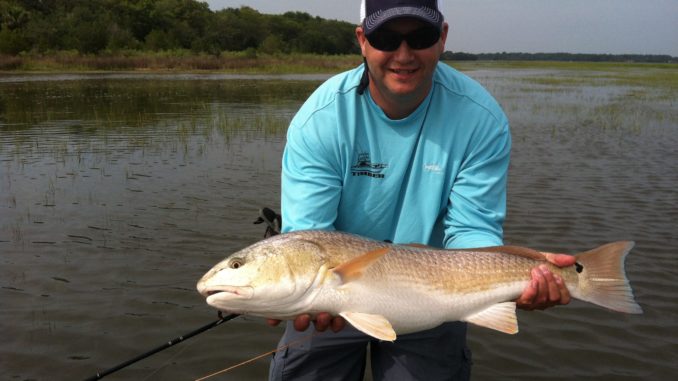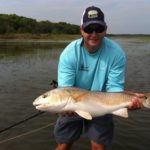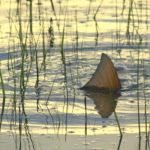
When reds go to grass, anglers go to pieces
Tailing reds in the grass. For those who know first-hand what a wagging redfish tail on a spartina grass flat looks like, that simple sentence gets the heart pumping and hands shaking. It is a visual experience like none other in the Lowcountry, and Charleston is surrounded by some of the best tailing flats in the state.
Little critters, including fiddler crabs, shrimp, blue crabs and baitfish, are favorites foods of redfish, which relentlessly pursue them. This desire drives redfish to go as shallow as possible and dig around searching for critters. When the tide gets big enough and floods the firm spartina grass flats that fiddlers, et al, make their home, redfish act like a fat man at a smorgasbord. With its nose down searching out forage, there is little doubt that a tails-up red is in the mood to eat, so anything that is placed in its path will very likely end up in its mouth.
Not all flats are created equal, and finding the best ones is something of an art as much as a science, but there are a few general guidelines that when used help narrow the search considerably. Scotty Davis, a guide and owner of Mount Pleasant’s Lowcountry Fly Shop, said, “A good flat will have short grass and a hard bottom with several entrances and exits so the reds feel comfortable and safe.”
The entrances and exits are places where the tide first enters and leaves a flat. In skinny water where reds are exposed to avian predators and can quickly switch from the hunter to the hunted, the ability to get to deeper water and cover quickly is important. A flat that does not have several creeks and ditches feeding it will not be a nearly as productive. With a slow gradient from deep to shallow, reds are also more likely to get skinny because there are no abrupt changes to discourage them, and when focused on the bottom, they will sometimes actually have there backs out of the water before they stop pushing.
Finding flats that meet the needed criteria from a boat is not always easy, but the best search starts at home. “Google Earth is the best thing ever for searching out good tailing flats,” Davis said.
Perhaps the most difficult thing to decipher is tide height. Different tide stations have different heights, so whereas a 6-foot tide near Charleston Harbor may be plenty of water, it may not be nearly enough on the Wando River.
“A lot of people get frustrated with trying to figure out the correct tide height for the area they plan to fish, but if they use a single station, Charleston Harbor, and then adjust for time, it becomes much easier,” Davis said.
The general consensus is a tide height of 6.0 feet at the Charleston Harbor is the perfect height for tailing reds, but that’s not necessarily the case. Wind direction can have an effect on predicted tide height, and some flats are lower or higher in elevation than what is considered average. Nothing beats experience when trying to put that part of the puzzle together, but it is worth the time to search out flats on different tides.
“There is not much different in tide height between a 5.8 and a 6.0, except there are a lot less anglers on the flats with a 5.8 because it is not the magic number,” Davis said. “But if the top of the flood is 6.0, then fish will be on the flat well before it reaches its apex anyway.”
Depending on tide height, reds generally show up on a flat anywhere from one to two hours before the dead high.
When outfitting for tailing reds, presentation becomes very important. Reds in shallow water are extremely aware of their surroundings, so they tend to spook easily. There’s no need for corks, live bait or big, loud lures; less is more. A medium to medium-light spinning outfit similar to what is used for largemouth bass works well, and many anglers opt for the ultimate in stealth, a fly rod.
Davis prefers weedless flies and soft-plastic lures in colors that match the surroundings, with just a little flash, and he focuses on placing the offering in just the right spot.
“I like to land my fly a few feet in front of the red and a foot past so I have time pull the fly out of the grass and get it on the bottom if needed,” he said. “I just let the fly sit still and wait on the fish to pick it up on his way through.”
Anglers who have never experienced the pursuit of tailing reds are missing out on one of the greatest experiences on the coast, and they need to give it a go, but they should proceed with caution.
“Tailing reds are 100-percent visual, and it’s like a drug it’s so addictive,” Davis said. “It’s hard on a marriage, and it’s hard on work, because a tailing tide might be in the middle of the workday or it might be during church, but you just gotta go.”






Be the first to comment